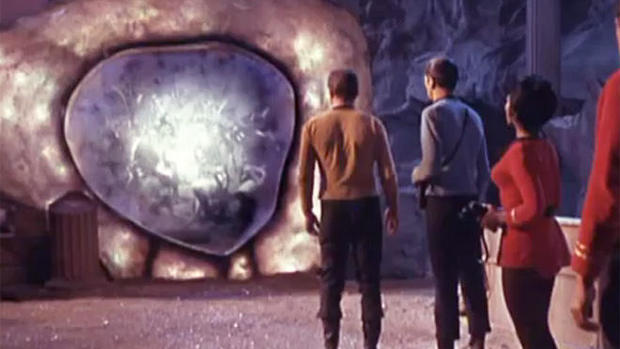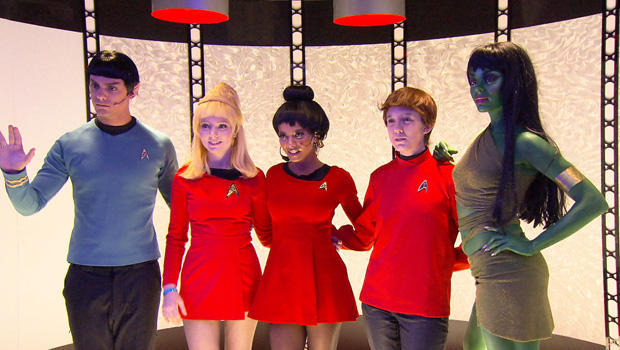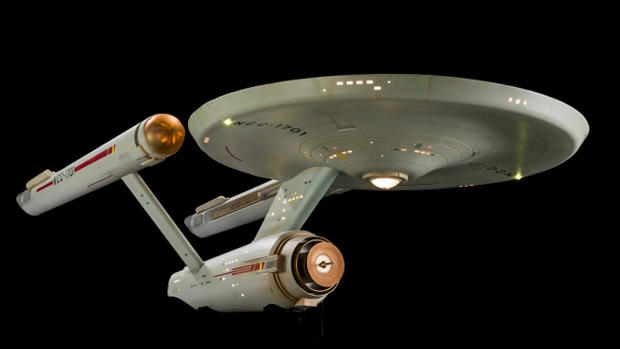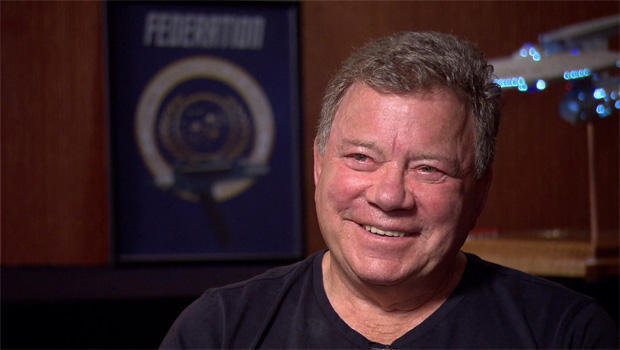Now 50, "Star Trek" continues to live long and prosper
“Star Trek”’s exploration of the final frontier has spanned five decades now, with more to come, as Faith Salie now explains...
“Space: The final frontier. These are the voyages of the Starship Enterprise …”
It’s a line that launched a pop culture powerhouse -- a line that, would you believe, even 50 years later, STILL doesn’t sound quite right to William Shatner, a.k.a. Captain James Tiberius Kirk.
“When I heard it, I thought, ‘I’m not doing it right. There’s something I’m not doing,’” Shatner told Salie. “It’s not right.”
“Star Trek,” the original series -- which lasted just three years from 1966 to 1969 -- boldly set off on a voyage that’s still travelling at warp speed half a century later.
That show led to spinoff series and movies, including a 2009 big-budget reboot that introduced Kirk and his gang to a new generation of fans.
It’s a good time to be a Trekkie! And those making the pilgrimage to last month’s annual Star Trek convention in Las Vegas -- no matter the species -- were feeling out of this world.
There, among the Kirks and the Spocks and the Hortas, Salie found perhaps “Star Trek”’s most important fan of all: 83-year-old Bjo Trimble.
Trimble told Salie that, upon sitting down in front of her TV on September 8, 1966, “We were thrilled to have grownup science fiction finally. Not, you know, ‘There’s an ugly monster, let’s kill it!’”
That night, Bjo and her husband, John, discovered a sci-fi show they could warm up to, in the middle of the Cold War.
Salie asked, “What kind of message did ‘Star Trek’ give to audiences who were worried that the world might be blown up in the next ten years?”
“Well, the message was, maybe it wouldn’t be,” Trimble replied.
Creator Gene Roddenberry may have pitched his show to the NBC brass as “a ‘Wagon Train’ to the stars,” but it was his hopeful view of the future -- stories of a racially-diverse crew settling problems peacefully -- that turned its viewers on. Still, by the end of the second season, word got out that the voyages of the Starship Enterprise were about to be cancelled.
Trimble said of her husband, “We talked about it. And he said, ‘There oughta be something we could do about that.”
Using 20th century technology of pen, paper and postage stamps, Trimble boldly went where no fan has gone before, and began a letter-writing campaign to save “Star Trek.”
Letters were sent not just to NBC, “but to all the NBC affiliates, to all your local TV stations and, most importantly, all the sponsors,” she said.
It worked! “Star Trek” was renewed for one more season. Though officially cancelled after that third season, Trimble’s efforts meant that “Star Trek” now had enough episodes (79 of them) to live on in reruns.
“’Star Trek’ was on every single night,” said Scott Mantz, the film critic for “Access Hollywood” (and, if his bar mitzvah photos are any indication, a lifelong Trekkie). “And
Syndication was where a whole new generation of “Trek” fans discovered the show, said Scott Mantz, the film critic for “Access Hollywood” (and, if his bar mitzvah photos are any indication, a lifelong Trekkie).
“Keep in mind that when ‘Star Trek’ premiered, you had television shows like ‘Bewitched,’ like ‘Gomer Pyle.’ And yet you flipped a channel and you’re watching ‘Star Trek’? This was so ahead of its time!”
For Mantz, it wasn’t just the storytelling that was ahead of its time; it was the way “Star Trek” motivated viewers to become fans.
“No entertainment property before ‘Star Trek’ had done a convention -- organizing fans, bringing people together, to dress up like their characters,” he said.
And sometimes, “Star Trek” fans can become “Star Trek” family. Meet Deborah Kirk. When she married, her husband, Barry, took HER surname. Their son’s name? Patrick James Tiberius Kirk.
“Now this is a family that really loves ‘Star Trek,’” Mantz laughed.
If all of this seems a bit spacey to you, consider all the “Star Trek” science fiction has today is science fact.
“Things like a communicator-cell phone, the use of computers, flat-screen monitors, iPads,” said Mike Massimino, a special advisor to the Intrepid Museum in New York City. He grew up watching “Star Trek.” A few decades later, he explored the final frontier for himself, as a NASA astronaut.
But it wasn’t just the technology that was ahead of its time. “If you look at the space program in the ‘60s when it came out, it was primarily white male test pilots who were there,” Massimino said. “Then it expanded -- they took civilian scientists, and then men and women of color. And even big Italian guys from New York, me!”
Which brings us back to the captain. For the Shakespearean-trained actor, “Star Trek” has always been, first and foremost, all about entertainment.
“You have interesting villains,” said Shatner. “You have strange, wonderful life forms that take place. You have mental gymnastics, plots.”
“You have love,” offered Salie.
“And you have love. Lots and lots of love! Oh yes! Pardon me a moment while I think about all that love,” he laughed.
And for the fans now there’s more love than ever. A new spin-off series, “Star Trek: Discovery,” launches on CBS All Access this January.
The voyages of the Starship Enterprise are far from over.
For more info:
- startrek.com
- Exhibit: “Starfleet Academy Experience” at New York’s Intrepid Sea, Air & Space Museum (through October 31)
- Exhibit: “Star Trek: Exploring New Worlds” at the EMP Museum at Seattle Center (through January 31, 2017)
- Follow @StarTrek on Twitter, Facebook, Instagram and YouTube
- “Star Trek Beyond” (Official site)




